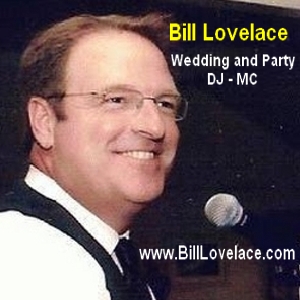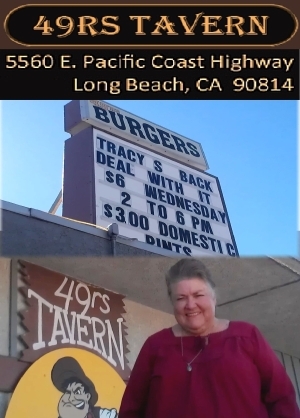[Ms. Aley email text]Long Beach City Council and Mayor,
Please find below information on the LB RHNA progress and the proposed LUE. The City has already met the SCAG 2040 requirement for above moderate housing units to 2040. The city needs to build approximately 1170 moderate and 2400 low/extremely low income units. The city will not provide actual proposed LUE units and I believe this number is many factors higher than what is needed.
The city should encourage more adaptive senior housing as there is a growing need. Senior housing will accommodate existing community members needs (with limited traffic & parking impacts) and allow family members to remain close by.
I believe the numbers produced by SCAG can be met with the existing Downtown and Mid-Town PDs. The proposed LUE EIR should consider a no change alternative that uses the existing un-built development capacity including current zoning/grannie flats and PDs along with the Placetypes Urban Design Element. One of the alternatives in the draft LUE EIR (caps heights in downtown LB) should be removed with another alternative that considers the SCAG requirements & real Housing Element Progress.
According to SCAG Long Beach is not extremely overcrowded and is 46th with many many other cities in Southern CA that have similar statistics. There is no State or County requirement to add 21,476 housing units to fix overcrowding. (No other city is doing this). The LUE does not specify income level and does not directly address overcrowding anyway. The SCAG RHNA numbers already consider area job growth projections (.67% per year).
Our city's infrastructure cannot handle the proposed increases in traffic, parking, utilities. The public will not accept the associated loss of quality of life impacts such as traffic safety, crime, pollution, and noise. Traffic and Parking will no longer be considered a environmental impact requiring mitigation (Per CEQA SB743). Future Project traffic/parking impact appeals to Council will not be available to citizens.
Use the existing Land Use plan goals as a guideline for future growth- new units in planned areas with existing high density. Any other additions to the existing LUE and Zoning should provide measurable neighborhood community benefits- that are supported by the people who already live in those neighborhoods. Protection of historical neighborhoods should be a priority above height/density increases. The City has used variances in the past and in some cases this has resulted in better developments (with the appeal process in place).
The proposed LUE and rezoning land entitlements will inflate future development costs. Organic growth & progressive progress LUE with a variance exception will result in controlled better planning and avoid over development boom bust problems.
Please find below research on this issue and some suggested changes to the proposed LUE and related processes.
Solution:
- Shorter time-frame 2028 for LUE, cut number of rezoned properties and 5 year reviews.
- Similar to Mobility Element CIP include proposed vetted list (not a legal requirement but as suggested future zoning changes that requires an LUE update).
- Set up residential permitted parking in parking impacted areas.
- Incremental update of LUE in response to Housing Element Progress reporting.
- Require rigorous auditing of Housing Element Progress and Economic feasibility/benefits reports. Reports should be complete, unbiased and include statistical error rates and assumptions.
- Additional housing over SCAGG RHNA must have neighborhood community supported benefits. Any variances to zoning would have to go through public appeal process.
Here are the facts:
Proposed LUE cannot predict the future.
Current stats: American Community Survey (Census)
Vacancy Rate Steady at 3.8-4.6 +- .4-.6 % Between 2010-2016 same within error rate
Crowdedness 2010 2016 1.0 Or less 87% 87% Delta between 2010 and 2016 same within error rate 1.01 to 1.5 7.4% 7.2% Delta between 2010 and 2016 same with in error rate 1.51 + 4.7% 5.4% Delta between 2010 and 2016 +1288 units overcrowded Long Beach is 46 on SCAG list of overcrowdedness [see data below]
The housing crisis in LB is overstated. Primarily a wage problem.
2016 Housing Element Update
Growth rate between LA (5.6%) and LB (2.8%) 2000-2016 LB Half of LA – Displacement gentrificationSEASP EIR Housing stated that in 2016 rents had risen to proportionately to income gains.
SCAG RHNA 2014-2016
Income Group RHNA 2014-2040 Progress 2017 Housing Update Need Extremely/Very Low 1773 321 1452 Low 1066 53 1013 Moderate 1170 0 1170 Above Moderate 3039 1328
Only shows 363- 2017
4500 units downtown recently built or finished in near futureMet 2040 City does not specify how many potential new units are permitted in proposed LUE.
Does not account for state mandated increased density and bonuses.
Existing proposed EIR Traffic analysis is based on SCAG 2040 RTP population growth ....not actual LB proposed unit increases with + 21,476 units overcrowding.
The traffic analysis flow model fails at LOS E and cannot predict actual intersection delays. City has no idea what level of gridlock is proposed.
No requirement to add 21,476 to fix overcrowding. (No other city is doing this)Beacon LBDC analysis showed only 20% of allowed units built. (Did not consider PD opportunities or new legislation and affordable housing funds) What is city's assumption for % built.
Proposed Changes to LUE
Solution:
Shorter timeframe 2028 for LUE cut number of higher density rezoned properties.
Similar to Mobility Element CIP include proposed vetted list (not a legal requirement but as suggested changes)
Set up residential permitted parking in limited areas.
Incremental update of LUE in response to Housing Element Progress reporting.
Require rigorous auditing of Housing and Economic feasibility/benefits reports.
Additional housing over SCAGG RHNA must have community supported benefits.SCAG Overcrowded Cities
SCAG Overcrowding Total SCAG >1.01 person per room 1 Huntington Park city 35.67% 2 Cudahy city 34.92% 3 Bell Gardens city 34.55% 4 Santa Ana city 32.14% 5 Maywood city 31.79% 6 Lynwood city 31.06% 7 South Gate city 27.63% 8 El Monte city 25.67% 9 Bell city 25.60% 10 Compton city 25.13% 11 South El Monte city 24.68% 12 Commerce city 23.08% 13 Baldwin Park city 21.89% 14 Paramount city 20.32% 15 Hawaiian Gardens city 20.07% 16 Pomona city 20.02% 17 San Fernando city 19.98% 18 Rosemead city 19.12% 19 La Puente city 18.48% 20 Stanton city 18.12% 21 Montclair city 17.71% 22 Santa Paula city 17.04% 23 Anaheim city 16.63% 24 Avalon city 16.58% 26 Garden Grove city 16.43% 26 Hawthorne city 15.95% 27 Pico Rivera city 15.88% 28 Norwalk city 15.71% 29 Lawndale city 15.03% 30 La Habra city 14.97% 31 Coachella city 14.84% 32 Rialto city 14.51% 33 Azusa city 14.45% 34 Los Angeles city 14.07% 35 Perris city 13.91% 36 Inglewood city 13.63% 37 Oxnard city 13.58% 38 Montebello city 13.51% 39 San Bernardino city 12.83% 40 Calexico city 12.80% 41 Unincorporated 12.80% 42 Ontario city 12.78% 43 Fontana city 12.70% 44 Artesia city 12.55% 45 Calipatria city 12.47% 46 Long Beach city 12.40% 47 Bellflower city 12.35% 48 Los Angeles County 12.03% 49 Westminster city 11.75% Downey city 11.69% Colton city 11.45% Industry city 11.38% Adelanto city 11.37% Buena Park city 11.33% Fillmore city 11.20% Indio city 11.15% Moreno Valley city 11.14% Santa Fe Springs city 10.91% Highland city 10.52% Unincorporated 10.35% Fullerton city 10.30% Duarte city 10.26% San Gabriel city 10.02% Desert Hot Springs city 9.97% Orange city 9.80%Source: http://rtpscs.scag.ca.gov/Lists/Overcrowding/AllItems.aspx
Sponsor Sponsor
Sponsor
Sponsor
Sponsor
Sponsor
blog comments powered by Disqus
Recommend LBREPORT.com to your Facebook friends:
Follow LBReport.com with:
RSS
Contact us: mail@LBReport.com





Hardwood Floor Specialists
Call (562) 422-2800 or (714) 836-7050








